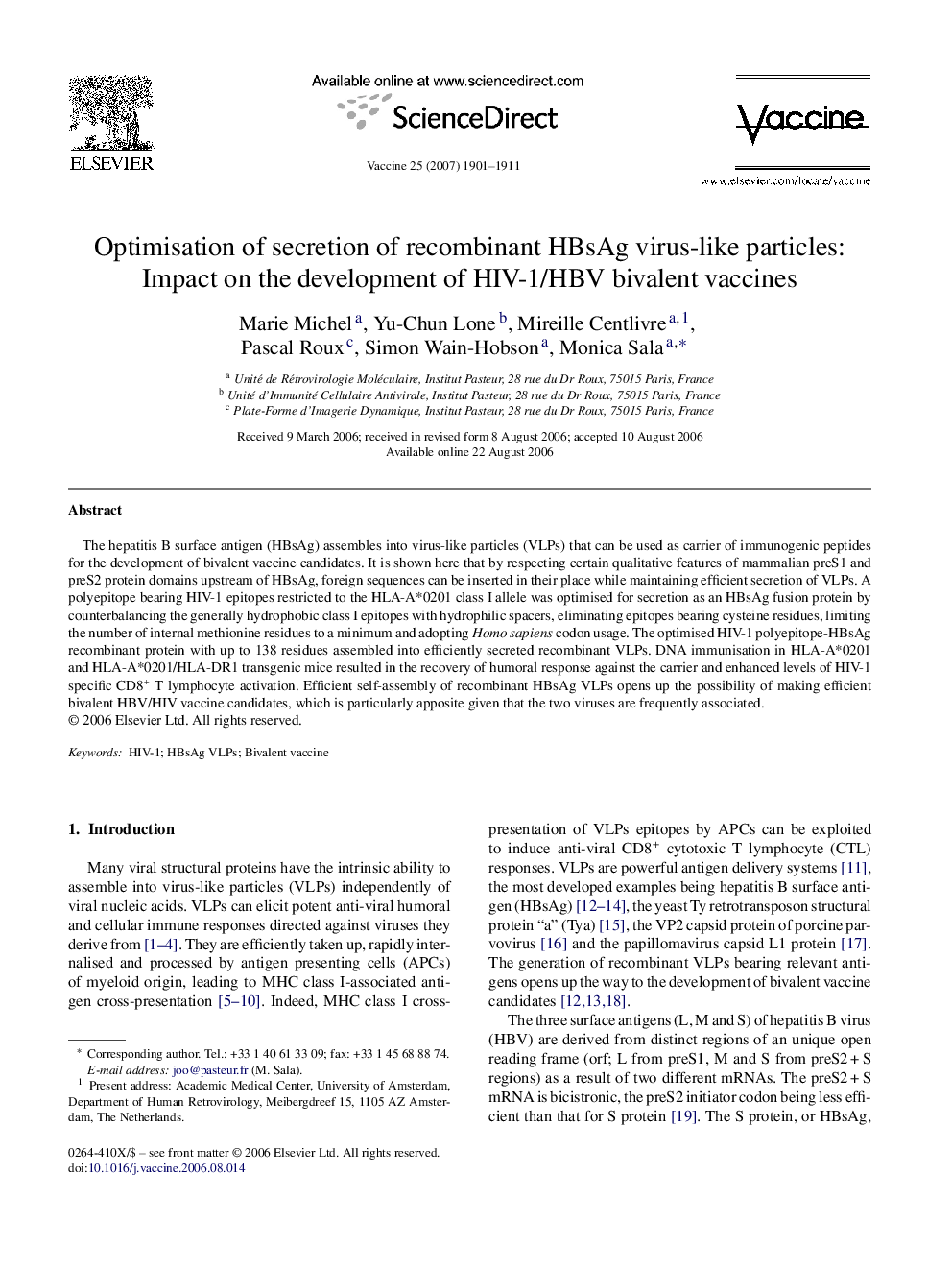| Article ID | Journal | Published Year | Pages | File Type |
|---|---|---|---|---|
| 2407235 | Vaccine | 2007 | 11 Pages |
The hepatitis B surface antigen (HBsAg) assembles into virus-like particles (VLPs) that can be used as carrier of immunogenic peptides for the development of bivalent vaccine candidates. It is shown here that by respecting certain qualitative features of mammalian preS1 and preS2 protein domains upstream of HBsAg, foreign sequences can be inserted in their place while maintaining efficient secretion of VLPs. A polyepitope bearing HIV-1 epitopes restricted to the HLA-A*0201 class I allele was optimised for secretion as an HBsAg fusion protein by counterbalancing the generally hydrophobic class I epitopes with hydrophilic spacers, eliminating epitopes bearing cysteine residues, limiting the number of internal methionine residues to a minimum and adopting Homo sapiens codon usage. The optimised HIV-1 polyepitope-HBsAg recombinant protein with up to 138 residues assembled into efficiently secreted recombinant VLPs. DNA immunisation in HLA-A*0201 and HLA-A*0201/HLA-DR1 transgenic mice resulted in the recovery of humoral response against the carrier and enhanced levels of HIV-1 specific CD8+ T lymphocyte activation. Efficient self-assembly of recombinant HBsAg VLPs opens up the possibility of making efficient bivalent HBV/HIV vaccine candidates, which is particularly apposite given that the two viruses are frequently associated.
